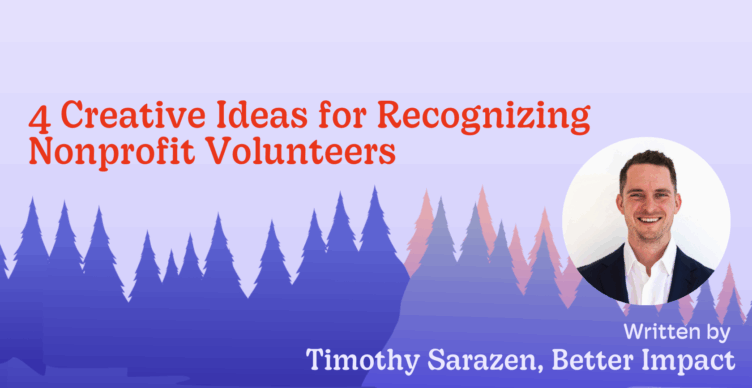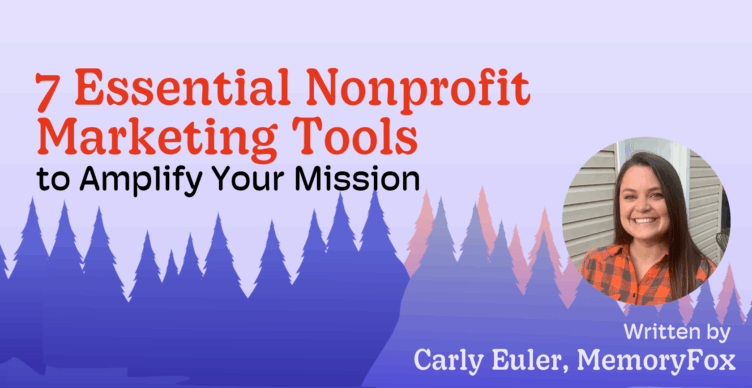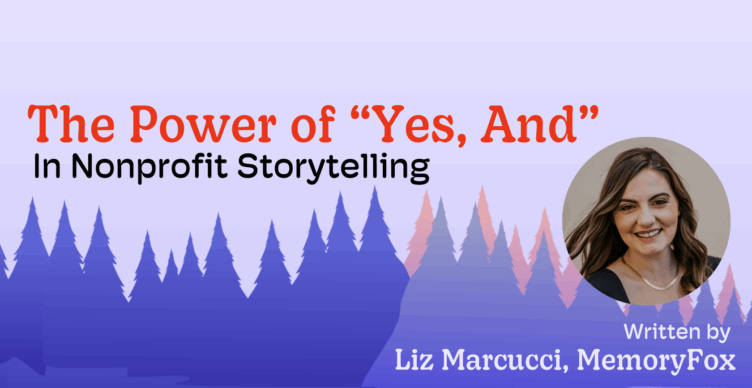Ethical Storytelling
5 Anonymous Storytelling Tips For Nonprofits, From Maria Bryan
MemoryFox’s 2023 Ethical Storytelling Report found that 58% of nonprofit professionals worry about sharing impact stories while doing no harm to the communities they serve. We recognize that there are many instances where sharing the identities of the people directly impacted by a nonprofit can lead to negative outcomes for those very storytellers. That is why many nonprofits find it absolutely essential to protect a storyteller’s identity and rely on anonymous storytelling strategies to convey their impact.
During a recent webinar, trauma-informed nonprofit marketing and communications strategist Maria Bryan joined the MemoryFox stage to share smart, practical advice for how organizations can thoughtfully approach anonymous storytelling for nonprofits. This 60 minute session spanned a wide-variety of strategies, compounded by powerful examples. I encourage you all to take the time to watch the webinar recording!
Today, I’d like to share a few things from the webinar that really struck me. Keep these five tips in mind as you start (or continue!) your anonymous storytelling journey:
1. Remove Identifying Details
Maria kicked off the session sharing a story about an individual who consented to having her experience shared decades ago… and found that its legacy continued to pop-up in her everyday life. She found that she would be asked about the story she shared in unrelated situations, like searching for a job and vetting potential roommates. At this point, Maria made a smart suggestion that this individual’s story might not have followed her so closely had the nonprofit removed her last name from publication.
It should be noted that in this specific example, the storyteller did not indicate that she’d like her story told anonymously, so technically the nonprofit did not do anything “wrong”.
Even so, this experience serves as a nice reminder that removing identifying details from a story, even small pieces of information, can effectively make someone anonymous. Consider what identifiers – like job titles, schools, or locations – could unintentionally reveal someone’s identity, and edit them out as needed.
2. Be Transparent About Changes With Your Audience
When you have decided to alter a story to protect someone’s privacy, tell your audience! Your story consumers have an important role to play in anonymous storytelling – don’t shield them from the decisions you’ve made, and take the time to educate them about why anonymous storytelling is the correct avenue for your nonprofit. Maria recommends adding a short anonymous disclosure when sharing an anonymous story.
Here are a an example disclosure you could place at the top or bottom of your published story:
- While the following names and identifying details have been changed to protect privacy, this story remains a real representation of the community we serve.
3. Scrub Your Images of Metadata
Even when you remove visible identifiers from an image, hidden data (otherwise known as metadata) can still remain. Maria reminded us that things like names, location and time stamps can follow a photo if it’s posted publicly. Before sharing, strip metadata from photos and videos to ensure storytellers can’t be traced.
For example, if you have an image saved as “The Smith Family” on your computer, be sure to change the name of the file before uploading it to your website or social channels. Additionally, you can upload your images to your photo editor of choice (I recommend Canva, personally!), edit the image slightly (resizing, for example) and redownload the image to have it saved with new, anonymous metadata.
4. Tell Your Audience What a Composite Story Is
Here is something I hadn’t previously considered: The term “composite story” is jargon for many audiences. Maria made a great point that just because your organization has made a commitment to sharing stories in a composite-style way, does not mean your audience will understand what that means.
Let your audience know that a composite story combines elements from multiple real stories into one to illustrate a broader experience. Add a clear disclosure so readers understand not just WHAT a composite story is, but why telling stories in this way is important to your nonprofit.
5. Have a Story Withdrawal Process
Storytelling, anonymous or otherwise, isn’t about collecting a one-time, blanket consent form. One essential aspect of ethical storytelling is allowing for your storyteller to maintain ownership of their story at all times. Maria emphasized the importance of offering storytellers an easy way to withdraw their story later if they change their mind.
Build this into your process from the start to protect their autonomy and agency. For example, here at MemoryFox, we offer a simple consent removal form that storytellers can fill out to have their story removed from the Story Bank. No questions asked.
Final Thoughts
These five tips from Maria Bryan’s webinar are simple, but powerful, ways to implement anonymous storytelling at your nonprofit. If you have ethical storytelling questions specific to your mission, I recommend attending one of Maria Bryan’s monthly Storytelling Circles. These Zoom meetings are a safe space to ask tough questions without judgement.
By building privacy and transparency into your process, you can share meaningful narratives while honoring the people behind them, which is the true heart of anonymous storytelling for nonprofits done right.

About the Author
Carly Euler
Marketing Director, MemoryFox
Carly comes from the nonprofit world ready to elevate the hundreds of nonprofits in the MemoryFox community. She currently serves as the Co-Chair of the Wily Network’s Young Professionals Association, and has previously held positions at the Breast Cancer Coalition of Rochester, the Code of Support Foundation, Kenya Lacrosse Association, and the BOMA Project, where she has specialized in marketing, communications, and fundraising. Storytelling has been an integral part of each role.




